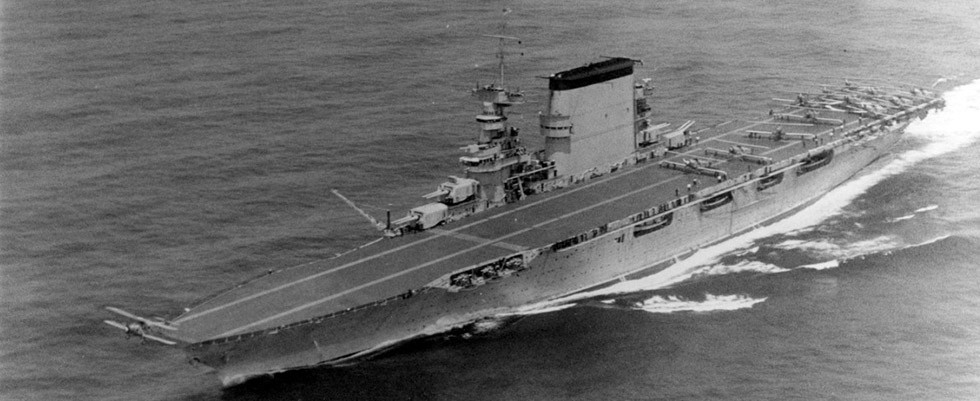
USS Lexington (CV-2)
USS Lexington (CV-2), 1927-1942
USS Lexington (CV-2), one of the U.S. Navy's first two aircraft carriers, was commissioned in December 1927 at Quincy, Massachusetts. Operating mainly in the Pacific, she took part in fleet maneuvers in the Hawaiian Islands, the Caribbean, and off Panama Canal. When the Japanese attacked Pearl Harbor on December 7, 1941, Lexington was transporting aircraft to Midway Island. During the December 11 attempt to relieve Wake Island, which was aborted, she was sent to attack Japanese installations in the Marshall Islands as a diversion. In January and February 1942, her aircraft raided Japanese positions in th southwestern Pacific. Along with USS Yorktown (CV-5) in early May, she participated in the Battle of the Coral Sea. On May 7 and 8, her aircraft took part in the sinking of the Japanese aircraft carrier Shoho and raided the aircraft carriers Shokaku and Zuikaku. The Japanese responded with aircraft attacks, which hit Lexington with two torpedo and three aerial bombs. Following gasoline explosions, she was abandoned and scuttled by USS Phelps (DD-218), leading her to be the first U.S. Navy aircraft carrier lost in World War II. On March 4, 2018, on an expedition to the Coral Sea, the research vessel RV Petrel discovered the remains of Lexington approximately 2 miles uner the sea and 430 nautical miles off the coast of Queensland.
To read more about the recovery of Lexington, please click here for the National Naval Aviation Museum's article on the NHHC Blog, The Sextant.
Image: NH 82117: USS Lexington (CV-2), 1929. Launching Martin T4M-1 torpedo planes. U.S. Naval History and Heritage Command Photograph.



